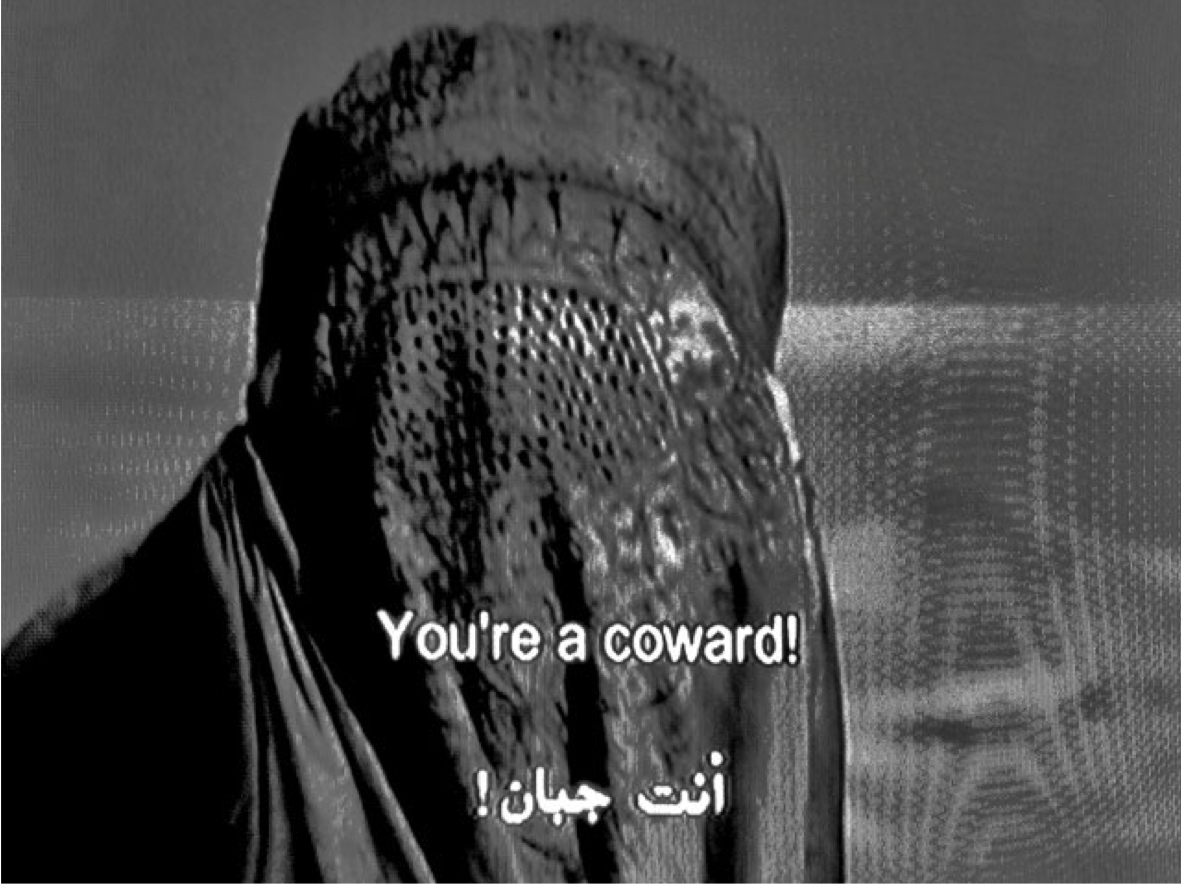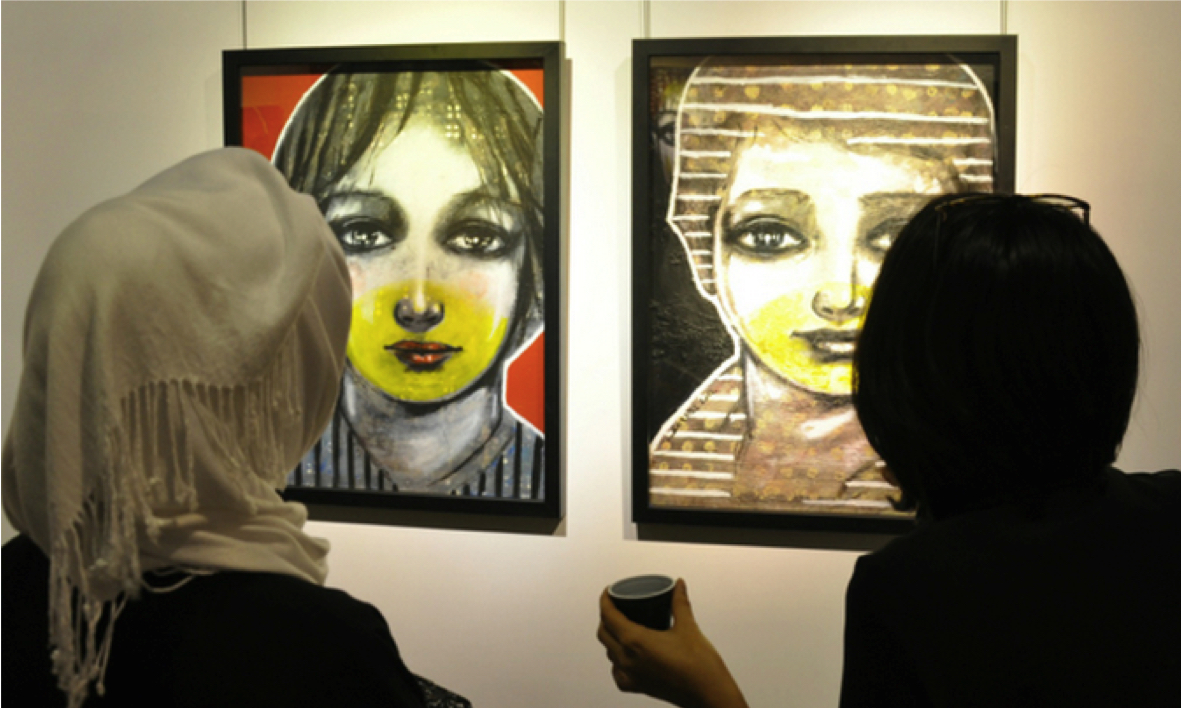The sights and sounds of Saudi Arabia’s groundbreaking Jeddah Art Week
Exhibition photographs courtesy the author
Until only recently, the concept of an ‘art week’ had yet to be seen in Saudi Arabia. Things are changing in the Kingdom. For one, the lack of support and timid attention the local art scene has typically received from the Government - as noted by Robert Kluijver in his Introduction to the Gulf Art World - no longer exist to the same degree they once did. As well, little by little, local artists around the Kingdom have been receiving a significant amount of support from galleries. The Jeddah Art Week, held between February 25 - 28, 2013 - perhaps the best example of this recent shift - was the first of its kind in the city and the history of the Kingdom, and a significant development in Saudi Arabia’s burgeoning art scene. This groundbreaking initiative was the result of the solid will, motivation, and hope created by all the contributors involved - galleries, auction houses, educational institutions, and charitable organisations - who pioneered a cultural innovation in Saudi society: Athr Gallery, Ayyam Gallery, Edge of Arabia, Sotheby’s, the Al Madad Foundation, and Dar El-Hekma College, among others.
The first day in the calendar of events during the Art Week saw the opening of Mostly Visible, a group exhibition curated by Ashraf Fayadh in collaboration with Athr Gallery, held at the Al Furusiya Marina & Yacht Club. As well, on the same day, Sotheby’s held its first-ever exhibition in the Kingdom, whetting collectors’ appetites for their upcoming auction in Doha. On one hand, the introduction of new artists held great promise for the future, and instilled much hope. On the other hand, however, in relation with works on display by other international artists, one might have concluded that Saudi artists still have a long way to go. However, that may mainly be due to the fact that Saudi art hasn’t fully formed an ‘identity’ for itself. It is there, it is emerging, and it is going somewhere, although no one knows exactly where.
The second day of the Art Week began with a symposium at Dar El-Hekma (lit. ‘The House of Wisdom’) entitled Finding Your Place, Realising Your Passion: A Conversation with Women in the Saudi Art Community. Though the title might have had a somewhat mainstream air about it, it was nonetheless a worthy attempt to engage Saudi youth. As part of the symposium, artists Abeer Mishkhas, Maha Malluh, and Manal AlDowayan interacted with audience members, talking about the local art scene and the necessary requirements for its growth. Later that day, Saudi filmmaker Ahd Kamel and Roberta Fedele, a journalist at the Saudi Gazette discussed Kamel’s recent participation at the Berlin International Film Festival, and her latest short film, Sanctity, which documents the story of Areej, a pregnant young Saudi widow who endures hardship to protect her unborn child.

Ayman Yossri Daydban - You’re a Coward! (courtesy Athr Gallery)
Also featured during the second day of the Art Week was the opening of Pen to Paper, a group exhibition co-organised by Athr Gallery and the Al Madad Foundation’s Aya Haidar. The exhibition highlighted notions of knowledge, truth, and the dissemination of information (and misinformation), and featured works by renowned artists such as Tammam Azzam, Ayman Yossri Daydban, Saddek Wasil, and Jowhara AlSaud. Speaking about education and the arts in Saudi Arabia, Haidar noted the reality of the arts as being officially excluded from the Saudi curriculum.
Acknowledging the fact that education is a key to the success of any vibrant art scene, let alone that of Saudi Arabia, one becomes pressed to ask: will the Art Week turn into a recurring tradition, or will it be regarded as just another passing trend? Interestingly, such is the question the upcoming and highly-anticipated Casual Art Talk in Jeddah seeks to answer.
One becomes pressed to ask: will the Art Week turn into a recurring tradition, or will it be regarded as just another passing trend?
Furthermore, the second and third days of the Art Week witnessed a unique mentoring programme hosted by Edge of Arabia, in an effort to support and guide young Saudi, as well as non-Saudi artists. The organisation’s founder, Stephen Stapleton, along with EOA artist Abdulnasser Gharem hosted a series of one-on-one sessions in Dr. Sami Angawi’s spectacular Jeddah residency. One can only hope for more initiatives along these lines, which engage Saudi youth to participate and be active, rather than take a passive role.
As the week progressed, Jeddah also played host to the opening of Ayyam Gallery’s newest branch, as well asthe soft opening of the Experiment 1 exhibition at Tashkeil. At Ayyam Gallery, art enthusiasts were welcomed into a new and modern space, in which the works of the Syrian artist Mohannad Orabi were on display. Using childhood memories as the basis for the works in the exhibition, entitled Profile Portraits, the paintings featured Orabi’s signature style of portraiture and use of colour. Although the absence of any titles or details was quite unexpected, one might perhaps have regarded this as a way of encouraging further analysis and reflection on the pieces on Ayyam’s part.

Mohannad Orabi’s Profile Portraits at Ayyam Gallery
Although the aforementioned events were the only ones officially declared, a few others were also held. During the same week, Gate 8, a group exhibition, was held at the Cedar International School. Accoring to Soraya Darwish, organiser of the Casual Art Talk, the artists in the exhibition seemed to be aiming only for large-scale artworks, as if size were the most important factor in determining the value of a particular piece. As well, Darwish also remarked on the increasing use of 3D-rendering in the production process, and expressed her concern about the overly academic air of the exhibition, in comparison with those of others held during the same week, such as Mostly Visible. ‘I would give Ashraf Fayadh an award for Best Contemporary Art Curator’, she said, playfully.
The next day, Courtyard invited the public to attend Kicking Canvas, an all-female group exhibition showcasing the work of select high school students. Similar to Gate 8, the exhibition had a somewhat overly scholastic character, and, the fact that restaurants surrounded the venue tempted one to question the appropriateness of the venue. That being said, however, one could definitely feel the passion and dedication behind the works on display, as well as in the words of the artists talking about their projects.
Altogether, Jeddah’s Art Week can definitely be considered a success, and a huge step towards the evolution of the nascent Saudi art scene. The diversity and scope of the art showcased in the exhibitions further provided testament to the status of art as a universal language, and a formidable medium of expression. One can only hope that Jeddah – and Saudi Arabia as a whole – will further bear witness to such groundbreaking initiatives in the years to come.
Cover image: Mohannad Orabi - Profile Picture (detail; courtesy Ayyam Gallery).
